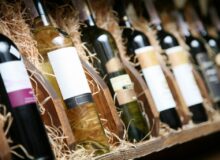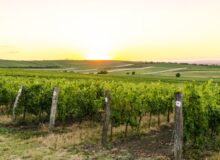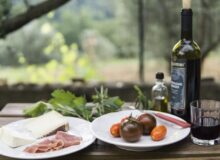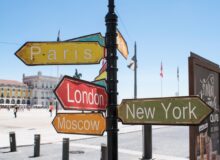Virginia has been producing wines for centuries. So it should not be a little known fact…But I guess it really is.
The most popular grapes are French varietals such as Cabernet Sauvignon, Merlot, Cabernet Franc, and Sauvignon Blanc, Chardonnay, Syrah, and Viognier.
American varietals and hybrids are also produced such as Norton, Vidal Blanc, Traminette, and Chambourcin. Virginia also produces a variety of fruit wines.
Very early on in Virginia, there was attempted production. In the early 1600s, the settlers in British colonial Jamestown, the first permanent English settlement in the Americas which is located on the northeast bank of the James (Powhatan) River about 2.5 mi southwest of the center of what is now modern Williamsburg.
Well those settlers ventured to produce European grapes as a way of boosting the British economy to rival wines from France, Italy, and Germany. But they failed in making them flourish due to a number of diseases and early the onset of what was later detected as Phylloxera, the mites that ended up devastating the world’s vines centuries later. But that’s a whole different story for another day.
Due to the difficulties in growing wines, interest shifted to tobacco crops.
But, in the 1770s, future president Thomas Jefferson attempted to grow vines at Monticello without much success, as did George Washington at Mount Vernon.
In the mid-1800s, successful farming was possible working with indigenous North American grapes, though still never as popular as European ones. By the turn of the 20th century, grafting American to European root stock, the technique proven to ward off the invasive Phylloxera, came into practice to strengthen vines. So, grapes such as Cabernet Sauvignon, Merlot, and Chardonnay could now be grown successfully in Virginia.
As the wine production began to get traction; prohibition in the 1920s put a sudden end to what was finally becoming a thriving industry and it wasn’t until the 1950s that wineries began to produce again in with any real seriousness.
Two of the top Virginia wineries, Barboursville and Waverly Estate were established in the 1970s, inspiring others to follow suit. Today, there are nearly 200 wineries in production.
The terroir, the climate and soil conditions in Virginia vary extensively. Areas such as those around the Blue Ridge and Allegheny mountain ranges are cool and rocky, further inland summers in the flat lands can be very hot and dry.
There are six AVA’s within the state:
*Shenandoah Valley – the largest and most diverse
*Monticello – where Thomas Jefferson’s viticultural dreams are finally being realized
*Northern Neck George Washington Birthplace – along the Chesapeake Bay
*Eastern Shore – scenic and sandy, with free-draining soils
*North Fork of Roanoke – higher elevations with great ripening potential
*Rocky Knob – as the name suggests, along the slopes of the Blue Ridge Mountains
Williamsburg and Jamestown are 15 minutes far apart, if you drive non-stop. Jamestown and Charlottesville are 2 hours 11 mins far apart, if you drive non-stop. The drives are great for site seeing and wine. In Charlottesville you’ll find the Monticello Wine Trail. Today, there are more than 35 wineries within a 30-mile radius of Charlottesville as part of the trail. Which makes for a great road trip and into to the Wines of Virginia.







